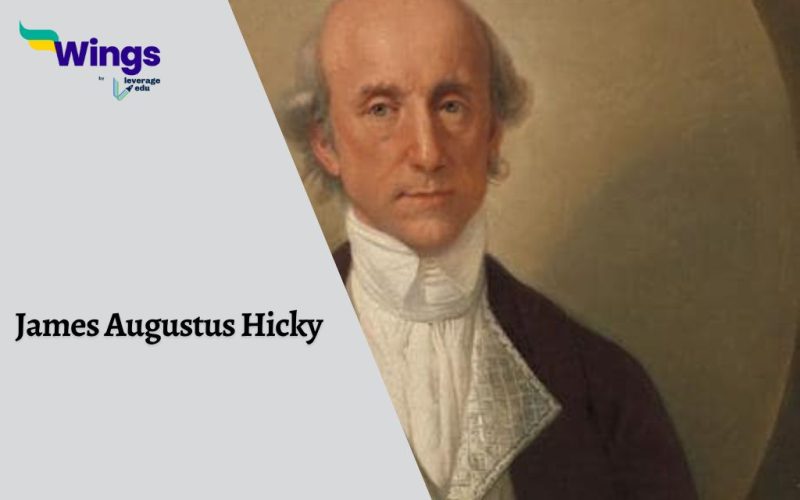James Augustus Hicky was an influential Irishman who pioneered India’s first printed newspaper, the Bengal Gazette. He transformed the landscape of media in India and used the power of his publications to raise issues and give voice to the voiceless and oppressed sections. In simple words, this newspaper was more than just ink on a piece of paper. But how did it all begin? How did he enter the world of publications? Let us take a look at his life from the beginning.
Early Life of James Augustus Hicky
Here are a few essential points about the early life of Hicky:
- James Augustus Hicky was born in Ireland in 1740.
- He went to London at a young age with William Faden who was a famous painter of his time.
- Soon after his arrival, Hicky quired a clerkship with William Davy, an English lawyer.
- A few years later, he quit law and started his profession as a surgeon. In 1772, he embarked on his journey to India with another person from East India who was on his journey to Calcutta. For this, he assumed the title and role of a surgeon’s mate, a prominent rank in the Royal Navy.
- Upon his arrival in the Indian subcontinent, he started another phase of his life both as a surgeon and a merchant. However, his business collapsed with the cargo being severely destroyed.
- Unsuccessful to pay his rent, Hicky was imprisoned and sent to the debtor’s prison in October 1776.
- It was during his time in jail that he got his hands on a printing press and typing equipment and began his business from jail.
Also Read: Lord Lansdowne: Life, Contribution and Legacy
What was the Bengal Gazette?
- The Bengal Gazette was an English-language weekly newspaper launched on 29 January 1780.

- Also known as the Original Calcutta General Advertiser, Hicky’s Bengal Gazette was also India’s and Asia’s first-ever printed newspaper.
- It was published in Calcutta which, during that time, was the center of colonial India.
- Being the writer, editor, and publisher, Hicky tried to cover all the important political and social events related to Calcutta.
- Although the newspaper in its early days took a neutral stance on common issues, things soon started taking a new shape.
- Topics that made frequent appearances in this newspaper included fire outbreaks, poor infrastructure of the country, poor quality of sanitation, etc.
- Additionally, Hicky’s Bengal Gazette started criticizing the government and its ruthless actions openly.
- He also condemned growing corruption in the form of criticizing government officials who were caught bribing. One of the most famous examples includes Hicky’s comments on Rumbold.
Also Read: Warren Hastings: Life, Legacy and Lesson
The Writing Style of James Augustus Hicky
- Hicky’s Bengal Gazette was full of commentary against the injustice prevailing in Indian society.
- He was known for using a sarcastic and provocative way of writing to appreciate a virtue or condemn a vice.
- James Augustus Hicky often used the power of media as a way to attack powerful and corrupt officials.
- He was bold, outspoken, and not afraid to speak his mind.
- Moreover, his writing style also included made-up names to ingeniously refer to real-life personalities.
- Apart from numerous government officials, he also accused Warren Hasting‘s wife of corruption which subsequently led him to prison.
- Despite the constant threat of censorship in the press, Hicky continued to use his pen as a weapon against the corrupted administration.
Related Blogs
FAQs
James Augustus Hicky is widely regarded as the father of Indian journalism. This is because he launched the popular Bengal Gazette, the first newspaper in India. Moreover, he also launched the Calcutta General Advertiser in the year 1780.
James Augustus Hicky is a popular Irishman who is well renowned for his crucial role in the evolution of printing in Bengal. He released India’s first-ever printed newspaper, the Bengal Gazette. His unique style of writing often clashed with the superiority of the British officials and witty comments against the oppressive rule motivated other budding writers of that time. They felt empowered to use print and media as a medium to spread their ideas and opinions on the social and political conditions of the country. As a result, the country witnessed a growing rise in the number of newspapers being released every now and then.
The bold, outspoken, and sarcastic writing style of James Augustus Hicky met with criticism, especially from the British East India Company. His unflattering portrayal of the evils of the society as well as certain British officials clashed with the government’s interests. For instance, his Bengal Gazette was widely acknowledged for the raw criticism of Warren Hastings, exposing bribery scandals, and misconduct of officers, and promoting press freedom and free speech. Accordingly, it is widely believed that all such other related factors led to the persecution of James Augustus Hicky.
This was all about James Augustus Hicky. We hope you liked our blog. If you want to read more articles like this you can visit our general knowledge page on Famous Personalities!
 One app for all your study abroad needs
One app for all your study abroad needs













